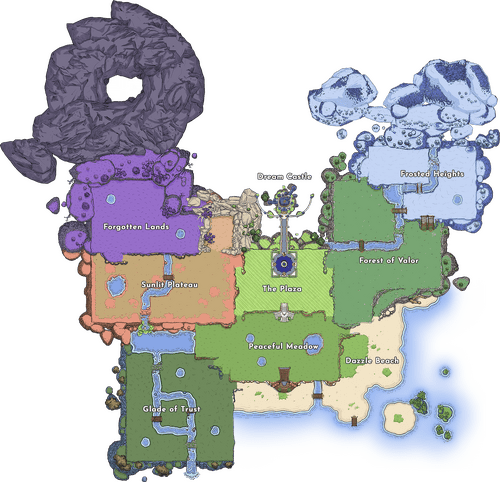Table Of Content

Landmarks, from Dolby Theatre to SoFi Stadium, give you an inside look at hidden areas and reveal fascinating details you’d never know about by simply driving by. Since 1991, Heritage Group Homes has offered high quality residential care at our five community based group homes. We serve boys ages at our Valinda location and girls, ages at our Phillips Ranch, Whittier, La Verne, and West Covina locations. We accept children for placement exclusively through Los Angeles County Department of Children and Family Services. At the time of the final move, Pasadena Heritage argued that the Longfellow house should remain in the city of its origin. But the horse was already out of the octagon; Longfellow’s house should never have been moved in the first place from the original location on San Pasqual.
Surprisingly Romantic Places in Los Angeles
The Los Angeles Historic-Cultural Monument program, established in 1961, could evaluate properties and list-register them, but not protect them. In 1969, at the request of the Los Angeles Cultural Heritage Commission, a group of concerned citizens established the Cultural Heritage Foundation to counteract this destruction. The Foundation organized Heritage Square as a last-chance haven for architecturally and historically significant buildings to be moved to, which otherwise would have been demolished at their original locations. They might be fun for art and architecture fans to ogle from the sidewalk, but sadly, many of the most quintessential L.A. Homes — John Lautner’s Chemosphere, Wright’s Ennis and Millard houses and Ray Kappe’s wood and glass home in Rustic Canyon — aren’t open to the public because they are privately owned. Neutra ran his architectural from the original house from 1932 until a fire destroyed most of the main building in 1963.
Take a Virtual Tour
The Lincoln Avenue Methodist Church was built in 1897, located at 732 North Orange Grove Boulevard in Pasadena. Designed in the Carpenter Gothic and Queen Anne styles, the floor plan also follows the Methodist tradition of non-axial plans. This plan, with the entrance in one corner and the pulpit in the opposite, is known as the Akron style, having originated in Akron, Ohio.
iconic L.A. homes you can tour IRL: Frank Lloyd Wright, Neutra, Eames and more
The outside aesthetics have often been compared to a tiered wedding cake, and the rather dark interior features a fine marble fireplace and rich wood floors. Photos of the house at its original location show a mansion high on a hill, lined by magnificently landscaped trees. Built by land baron Elias Jackson “Lucky” Baldwin, this delightful cottage is nestled in the Los Angeles Arboretum and Botanic Gardens. On the outside, the 1885, stick-style architecture makes this summertime playhouse look like it’s made of candy. The wraparound porch affords splendid views of what was once Lucky’s beloved Santa Anita Ranch.
Step into history at Heritage Square
Many of the buildings are only open to guided tours, you cannot go inside on your own. Another Frederick Roehrig design, this Queen Anne-style mansion was built by Andrew McNally, founder of the Rand-McNally Publishing Company. The estate featured beautiful gardens, an aviary, and a private railway spur. Incidentally, McNally's grandson was the famed SoCal architect Wallace Neff.
Its structural system predates the textile-block system Wright would use in his other Los Angeles houses. Wandering around this cluster of Victorian buildings, visitors are able to glimpse a forgotten chapter in the history of Los Angeles, back before it became the bustling city it is today. The Missions and Ranchos are a special designation of historic homes that have such a unique position in telling the history of southern California that they deserve a separate page. Check the calendar for upcoming tours led by expert docents, which provide a special look at the site and its history with the chance to ask questions. The Hale House appears in the title sequences of Amanda's starring Beatrice Arthur.
Community
Throughout the year, we host events for our community to come and enjoy the grounds. Go to the end of the road, and the entrance is on your right at the end of the cul-de-sac. Hollyhock House reopened to the public in February 2015, and the meticulous project earned a 2015 Conservancy Preservation Award.

Temporary restraining order sought against owners of Heritage House apartments - KTVI Fox 2 St. Louis
Temporary restraining order sought against owners of Heritage House apartments.
Posted: Thu, 22 Feb 2024 08:00:00 GMT [source]
Long before Pete Seeger sang, “Little boxes on the hillside, little boxes made of ticky tacky,” lamenting the eerie sameness of postwar development, architects and social progressives bemoaned that our houses looked alike. Americans were supposed to be innovators, and yet our homes drifted toward conformity, with designs that didn’t have much to do with how we lived. One such worrier was phrenologist, architect-tinkerer and proto-environmentalist Orson Squire Fowler. General admission tickets cannot be purchased ahead – they are sold in person only, and do not include access to the interiors of the buildings. Built in 1899 for the artist and socialite Sarah Posey, this fantastical home was bought only a year after Posey settled in by the legendary oil magnate EL Doheny and his wife Estelle. The house was sold many times and was moved from 4501 to 4425 North Pasadena Avenue (now Figueroa Street) before being purchased by James G. Hale in 1906.
Heritage Manufactured Homes
The living history museum shows the story of development in Southern California through historical architectural examples. In 1927, Barnsdall gave Hollyhock House, 12 acres, and the Residence A guest house to the City of Los Angeles. California captivated both Barnsdall and Wright, and here the architect had the opportunity to develop a new regional expression, which broke from the acclaimed Prairie style he had developed in the Midwest. He took inspiration from building precedents native to the Southwest—the Pre-Hispanic and the Pueblo.
This multicolored, turreted, upper middle class house was originally built in 1887 at the base of Mount Washington by real estate developer George Morgan. It has been called "picturesque eclectic," and is a mixture of the Queen Anne and Eastlake styles of architecture. Pasadena Ave. (now Figueroa Street) early in its existence, and bought by motorman James Hale and his new bride Bessie. The couple separated and Bessie converted the richly ornamented home into a boarding house. Many of the house's original interior features are still intact, including wainscoting in the foyer that is pressed paper made to look like embossed leather. In 1915, Aline Barnsdall, an oil heiress, first approached Frank Lloyd Wright not to build a house but a theater.
Heritage Square Museum explores the settlement and development of Southern California during its first 100 years of statehood through historic restoration and preservation. Are all about the details — in the concrete textile blocks of Frank Lloyd Wright’s Ennis House, in the hand-carved millwork of Greene & Greene’s Gamble House, and in the pool that cantilevers over the hillside outside Pierre Koenig‘s Stahl House. The house was designated as a National Historic Landmark in 2007 and has been nominated as a UNESCO World Heritage Site. Featuring a decorative motif inspired by Barnsdall’s favorite flower, Hollyhock House is an extraordinary and early expression of Southern California architecture. We depend on ad revenue to craft and curate stories about the world’s hidden wonders. Consider supporting our work by becoming a member for as little as $5 a month.
The open-air Heritage Square Museum features architecture from the 100-year period between 1850 and 1950. As L.A.’s population boomed in the 1960s, many of its 19th-century buildings were demolished with the rapid urbanization that took hold. That said, the octagon is better off protected at Heritage Square while we become a heritage city with historic sites and buildings preserved together.
Construction was supervised by Wright’s son Lloyd Wright, and the project brought a young Rudolf Schindler to Los Angeles. Due to intense differences between Wright and Barnsdall, only three buildings were constructed, and Barnsdall rarely occupied her residence. In 1927, she donated the property to the City of Los Angeles for use as an art park.
It is considered a cousin to both the Prairie and Craftsman styles of architecture. This delightful 1886 Pasadena home is a charming example of the Folk Victorian style of architecture. These dollhouse like houses were much more functional than most Victorian styles, with family-friendly, regular floor plans and a lack of ornamentation—perfect for hardworking, everyday people. Built circa 1888, this charming middle-class Glendale house is a combination of the popular Queen Anne and Eastlake styles of architecture. Four doctors lived in the home over the years, as did the early movie star Nell Shipman.
At Heritage Square, which isn’t a square, you’ll find a house that isn’t a rectangle. Built in 1841 as a simple three-room adobe, this home base of the pioneering Workman family was updated during the 1870s. According to historians, the renovated house is “believed to have been designed by early Los Angeles architect Ezra Kysor... The picturesque country home reflects the architectural tastes that were popular in mid-nineteenth century America.” The original traditional adobe is still encased in the renovated structure, which is now part of the Workman-Temple Homestead Museum.





















